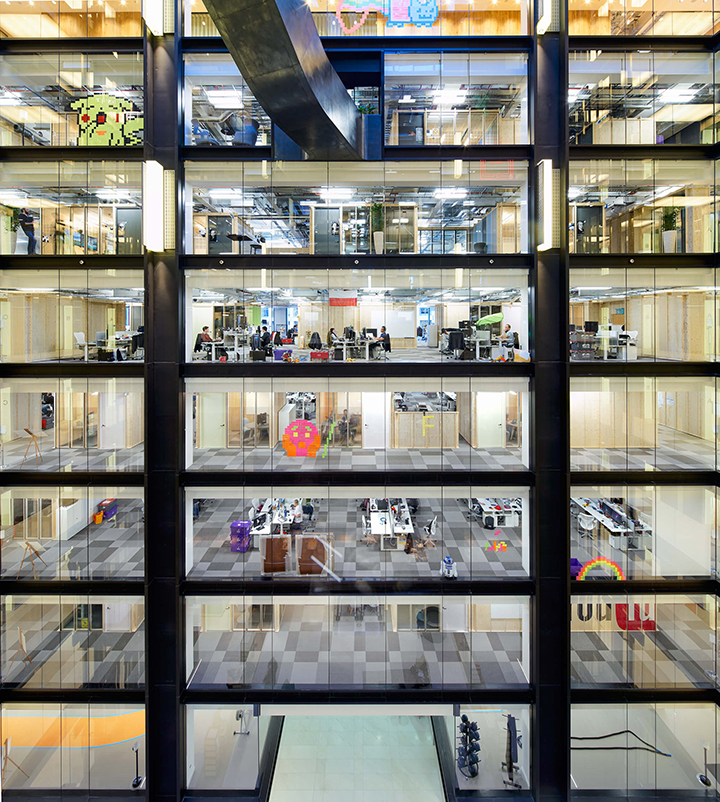Carbon Accounting
Verification matters as we scale our progress.
I suppose we never really know where our careers will take us, but I have recently realized with considerable surprise that despite my training as an environmentalist and building scientist, I have found myself learning how to become, well, an accountant. Not a normal financial accountant, but rather a carbon accountant. Along with my fearless colleagues at ILFI, we have been wading through the complex and critical details of the carbon impacts of our built environment in such a way that we can provide clear and rigorous accounting guidelines for buildings and companies that have made commitments to reduce their carbon emissions in line with the Paris Agreement and other related climate action regulations. We do this under the auspices of our increasingly popular and well-referenced standard, ILFI’s Zero Carbon certification.
Our Zero Carbon certification program, launched in 2018, covers the embodied and operational carbon impacts of buildings. Since that time, we have registered nearly 20 million square feet all over the world. We believe that it is the most well-used certification in the world that exclusively covers the carbon impacts of a building. Although it was before my time with ILFI, we launched this program to help catalyze the rapid decarbonization of our global built environment by providing the best guidance we could find on what a “zero carbon” building was at that time, considering such industry-leading issues as whole building embodied carbon emissions caps, offsite clean energy purchasing, scopes of analysis for whole building life cycle analysis, and more. It was the first of its kind, and it was clearly an effort to build the plane while flying it. Our industry (along with our entire global economy) has to make incredibly difficult transitions in our efforts to drive down emissions, adapt to our warming world, and apply regenerative design principles. We are all doing our best to attempt to create the right standards, market mechanisms, public policies, softwares, and other innovations to make this happen. For us at ILFI, this has meant a continuous evolution for our Zero Carbon program as we seek to provide the clearest and most scientifically sound requirements possible.
Creating a standard that is documentable, verifiable, clear, concise, and applicable to a wide variety of buildings around the world is not an easy task. But we are building on decades of experience in this work, and I am incredibly impressed with where we are today. And we would not be nearly as far along if we didn’t have friends on this journey. This week, our announcement of our collaboration with four of our largest clients — Amazon, JLL, JPMorgan Chase, and Prologis — is built on years of shared learnings on what is working and what needs evolution around carbon accounting for not just buildings, but more broadly for carbon accounting as a field and scientific landscape.

Photo courtesy of Google and Tim Soar
When I worked for Google’s Real Estate team over a decade ago, I learned just how different the scale of thinking is when you have a global footprint. In order to achieve our global carbon goals, it is critical that we develop solutions and infrastructure for large companies that work at the global level. Thinking at that scale ensures that the tools that we build can themselves scale at the pace we need. This is the kind of standard-setting that is critical to the success of large-scale public policy, and really any policy that is intended to help the entire global building stock move rapidly towards decarbonization.
It is this scale and speed that excites me about our new collaboration with these four leading companies and the wonderful individuals working with us in this effort. All four companies have incredibly passionate and knowledgeable in-house experts working on carbon issues for their businesses, and so our collaboration benefits from these teams of professionals who are working with real carbon targets and the complexities of design, construction, and operation of real estate around the world.
The new version of our Zero Carbon certification will advance our guidance on carbon accounting for buildings in a variety of areas including embodied carbon, refrigerants, the integrity of carbon markets, and more. But the most exciting aspect of this work for me is that we are including explicit guidance for existing buildings seeking certification without major capital investments. As someone who comes from the building operations side of the industry, I believe that some of our greatest unsung climate heroes are the folks who operate and maintain our buildings with decarbonization and efficiency aims. In case you are envisioning that our built environment will be decarbonized by a one-by-one major renovation of every building in operation today, I want to dispel that particular misconception. There are opportunities to gradually decarbonize buildings every day— not during design or construction projects, but just during the day-to-day life of a building. Equipment dies and is replaced, people move in and out, buildings are bought and sold, rented and leased. Building certifications (at ILFI and elsewhere) have historically done a much better job of defining “what good looks like” when we are designing and building, but haven’t always been as effective at defining “good” for buildings over the course of their long lifespans. There are many particularly nerdy but critical questions that we must answer about the carbon accounting of existing buildings, and the next version of our Zero Carbon certification will address those issues. Having the consultation of these four major companies with vast portfolios is extraordinarily helpful in that piece of the work.

Photo courtesy of Google and Tim Soar
In case you think this work is flying under the radar and only on the minds of a few greenies on the fringe, let me update you: just weeks ago, a group of some of the largest real estate asset investors in the world published a white paper under the auspices of an effort they have been working on for nearly two years. The group, known as Leaders of the Urban Future, issued a call to action for the global real estate industry to align on definitions, metrics and accounting practices for carbon in the real estate sector. The white paper analyzed the current state of certifications that cover carbon emissions for buildings, noting how they line up with a set of rigorous principles for what should be counted in the carbon footprint of a building or portfolio of buildings. We were impressed and delighted with the team that worked on the white paper, led by consultants from the well-respected London-based consultancy, SystemIQ. And we were honored and pleased to see how well our standards line up with the ‘North Star’ that these leading voices put forward. Indeed, aside from the wonderful new UK Net Zero Carbon Buildings Standard that is in development, our Zero Carbon certification is most aligned with the rigorous definition that this group of major investors has put forward based on the most advanced and rigorous carbon accounting schemes in the world (see page 14 of the White Paper to see how others stack up).
And it is not just the largest and most progressive investors in the world that are calling for this critical carbon accounting work to be done. The official ‘Buildings Breakthrough’ Agenda, launched at COP28, is a major piece of the infrastructure for our industry in guiding our contributions to the Paris Agreement target for a 1.5 degree future. In that recently launched Agenda, the very first priority action speaks to the need for clear and rigorous definitions and assessments for near-zero emission and resilient buildings. Doing this well is at the top of our collective to-do list! We at ILFI are trying to do our part by rallying our community to evolve the best possible standard we can, and will be helping to ensure that this work happens around the world.
I will admit that it can feel frustrating at times to feel like we are caught up in the details of ‘what counts’ when it comes to the carbon emissions of a building. Our planet needs us now, and these technical details can feel small in the face of our global challenge. But we are learning rapidly that we simply cannot run this race together if we don’t all play by the same rules and know where the finish line is. We are committed to doing that work as quickly and effectively as possible, and we are deeply grateful to Amazon, JLL, JPMorgan Chase and Prologis for making this work possible through their support and collaboration. We look forward to sharing our progress with our members, partners and clients, and welcome your help and feedback as we make this journey together.
Header photo 6 Pancras Square, Courtesy of Google and Tim Soar.


